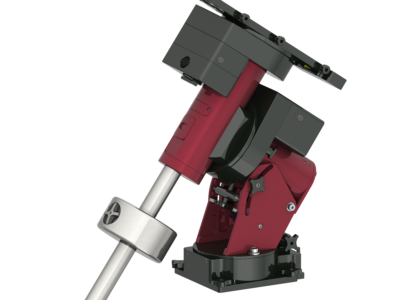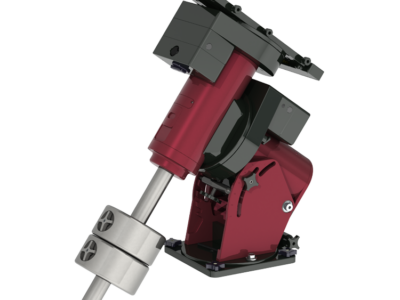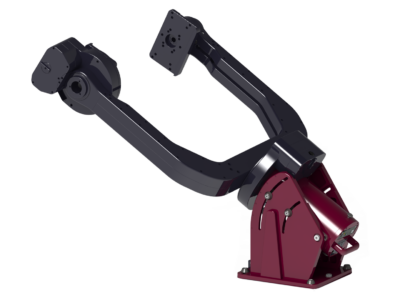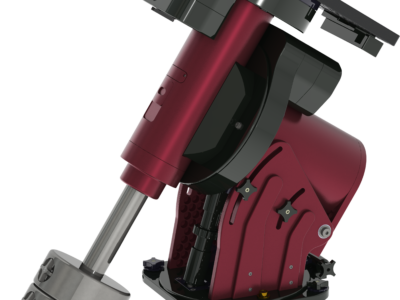Paramount Series 6
Paramount Series 6 models began shipping in January, 2024.
Shop for Paramount Series 6 Mounts
Check out the Paramount Series 6 mounts!
-
 Paramount MYTPrice range: $8,595.00 through $14,595.00
Paramount MYTPrice range: $8,595.00 through $14,595.00 -
 Paramount MXPrice range: $11,795.00 through $17,795.00
Paramount MXPrice range: $11,795.00 through $17,795.00 -
 Paramount Taurus 400Price range: $19,295.00 through $25,295.00
Paramount Taurus 400Price range: $19,295.00 through $25,295.00 -
 Paramount MEPrice range: $19,295.00 through $25,295.00
Paramount MEPrice range: $19,295.00 through $25,295.00
Paramount Series 6 Video
“Great improvements to an already wonderful line of mounts. My 2015 vintage MYT is still going strong, and I have an older ME mount that I do not have a location to install it in yet but that is still working well too last time it was used. And to make the MKS 6000 an upgradeable option for all existing mounts going back so many years—a great option and a testament to the excellent engineering that has been applied to these systems to make that practical. You guys rock, thanks for providing such wonderful long-term value in your products!”
—ML
Paramount Series 6 New Features
Paramount Series 6 Features and Specifications PDF
Paramount Series 6 Models vs. Paramount Classic Models
The document below has a side-by-side comparison of every new feature in the Paramount Series 6 MYT, MX, and ME models and the earlier models (MYT Classic, MX+, and ME II).
Are you wondering what has changed in the Paramount Series 6? Here’s the document for you. This table shows the new Paramount Series 6 features. If a feature you’re interested in (for example, the physical size of the mount’s base) is not listed, then the Paramount Series 6 is identical to earlier the model Paramount models.
Paramount Series 6 Frequently Asked Questions
What is the difference between motor-based incremental encoders and on-axis absolute encoders?
On-axis Absolute Encoders vs. Motor-based Encoders.
Paramount's equipped with on-axis absolute encoders know where they are at all times. Paramount's with incremental encoders (or motor-based encoders) know only how far they have moved since they were initialized using a nightly process called homing.
The crucial additional difference is that the on-axis absolute encoders are fitted directly to the mount axes themselves, bypassing the worm drives. Paramount's with incremental encoders are fitted to the worms instead, which means that with incremental encoders alone, periodic errors in the worm drive show up in the tracking. These mounts must be calibrated and corrected using a process called periodic error correction (PEC), which measures and records the repeatable gear train errors and removes them. (TheSky features advanced, multi-harmonic PE detection and PEC calibration that minimizes periodic error in mounts with incremental encoders.)
For mounts with incremental encoders, homing re-zeros the encoders when precise sensors on each of the axes are reached. From then on, the incremental encoders are in effect delivering absolute readings.
However, the crucial additional difference remains, namely that the incremental encoder system is behind the worm drive, and periodic error correction is still required to get the best out of the RA tracking.
High-resolution on-axis absolute encoder technology is significantly more expensive than incremental encoders.
Are on-axis absolute encoders right for me?
The short answer is, “it depends.”
Gear-driven Paramounts equipped with on-axis absolute encoders do not have periodic error, require no mechanical initialization (or homing), and the number of TPoint pointing samples needed for precision calibration is reduced.
These advantages expedite nightly setup, negate one-time periodic error training, and shorten the calibration process require to achieve spectacular pointing and tracking performance. However, the Paramount worm gear's uncorrected periodic error is low (below 7 arc seconds peak to peak), and, after a one-time PE training, periodic error correction (PEC) generally make it negligible. The Paramount without on-axis absolute encoders requires a nightly Find Home process that usually takes a minute or less to complete.
So, at least with Paramounts, periodic error is effectively in the noise, and homing straightforward.
What about pointing and tracking?
Without on-axis absolute encoders, Paramounts routinely produce 5-to-10-minute unguided exposures; many have reported 20 minutes. Also without on-axis absolute encoders, Paramount’s produce all-sky pointing accuracies at or below 30 arcseconds RMS (usually less than 15 arcseconds on fixed mirror telescopes).
Paramount’s exceptional software makes the above performance possible. TheSky Professional edition, in conjunction with TPoint™ and ProTrack™ the mount’s position is continually updated in both axes to correct system-wide pointing and tracking errors caused by tube flexure, atmospheric refraction, polar misalignment, harmonic errors from mis-centered encoders and/or worm gears, and more.
On-axis absolute encoders alone cannot correct these errors which exist with all telescopes. A properly applied telescope model is necessary to achieve superior pointing and tracking.
So are on-axis absolute encoders right for you? Perhaps if you want to enjoy the conveniences mentioned above. And for many, that’s enough. With that said, the optional on-axis 26-bit Renishaw absolute encoders with 0.02 arc second precision are the finest available and they operate in temperatures between +80°C and –40°C.
When will Paramount Series 6 mounts start shipping?
Visit http://www.bisque.com/series6 for the latest shipping status.
What is an XT60 power connector?
A new Paramount Series 6 feature is a redesigned through-the-mount power solution that uses XT60 power connectors. These connectors are commonly used for recharging batteries in e-bikes, RC cars and drones. They also excel at supplying power to astronomical equipment. Rated at 500V up to 30A (15KW maximum), they accept 12 AWG wires, and can provide sufficient power to all the direct-current astronomical devices on the telescope.
Can the earlier model Paramount mounts be upgraded to use the MKS 6000?
Yes. The latest information about MKS 6000 Upgrade Kits is available at http://www.bisque.com/6K.
Can the earlier Paramount MYT, MX and MX+, ME and ME II models be upgraded to accept absolute on-axis encoders?
No. The Paramount Series 6 models have been redesigned to accept the Renishaw absolute rotatory encoders. The Paramount ME II, which presently uses tape encoders, is the only mount that can be upgraded with absolute on-axis encoders.
If I purchase a Paramount Series 6 model without the optional on-axis absolute encoders, can they be installed later?
Yes. You can send your Series 6 model to the factory where they can be installed. Labor and shipping charges would apply.
Does the Paramount have an external SBIG ST-4 autoguider port?
No. TheSky software, required to control the Paramount, issues autoguiding corrections directly to the control system using Software Bisque's exclusive Direct Guide™ autoguiding technology. This eliminates the need for camera relays, autoguider ports and failure-prone autoguider cables.
Third-party automation software can access Direct Guide through TheSky’s scripting interface.
Does the Paramount mount control include software?
Yes, all Paramount mounts come with Software Bisque’s Universal bundle that includes:
- TheSky Professional edition
- Cameras+ module
- Domes module
- TPoint™ module
- Weather module
- Multi-OS+ module to install TheSky on macOS™, Ubuntu™ Linux (ARM64), Ubuntu™ Linux (x86_64), and Windows™ operating systems.
Are the on-axis absolute ring encoders compatible with older model Paramount mounts?
No, Paramount Series 6 models, only, can accept the on-axis absolute ring encoders. On-axis ring encoders cannot be installed on the Paramount MYT classic, Paramount MX classic, Paramount MX+ or Paramount ME II mounts.
Note that on-axis absolute tape encoders can be installed on the Paramount ME II, and the MKS 6000 is compatible with both ring and tape encoders.
Does Software Bisque have a trade-in program for earlier Paramount models?
At this time, Software Bisque does not presently offer a Paramount trade-in program.
How do I lubricate my Paramount mount?
See the Paramount Lubrication Video for details how to lubricate gear-driven Paramount mounts. (Log in required.)
What is the Paramount Limited Warranty?
See the Paramount Limited Warranty page for details about what's covered.
The 3-foot MKS 6000 PSU cable is not long enough. Where can I get an extension cable?
PSU extension cables can be purchased from Amazon and other retailers. See this Amazon product for specifications.